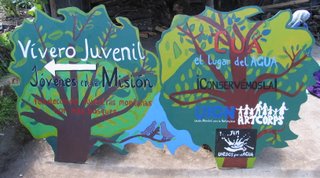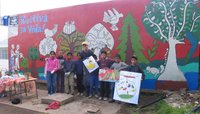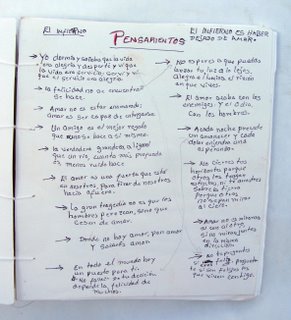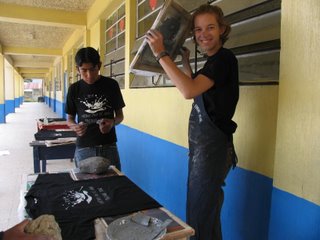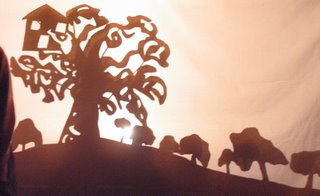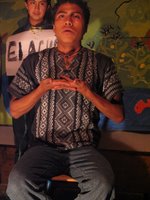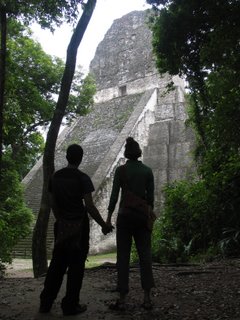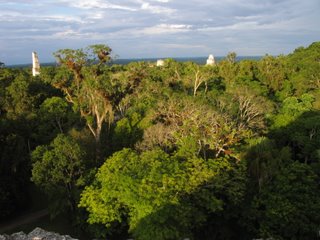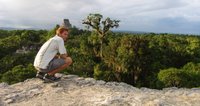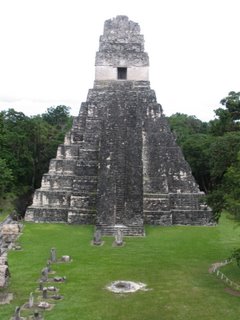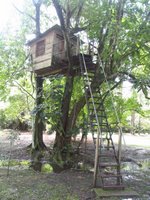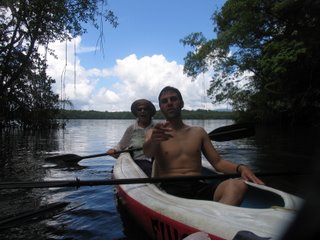Rocking la JEM

La JEM is known to rock the boat. Its rocker attitude makes them rebels, crazies, creative. They wear KORN hats with ripped jeans and spray painted t-shirts. They carry around guitars and sing in public. They have Christian rock concerts where they sing about the environment. They wish to be more crazy than they are but don’t know how.
In August la JEM began collaborating with Young Achievement, a non-profit aimed at teaching business skills to young adults. One of the small businesses created was a café, Rockafé, aimed at young music lovers. I first was called upon to help create a sign for the street, which you see in the above photo, but I also learned that Rockafé had other problems. Since it’s run by sweet, immature 16-year-old girls—who can’t cook and who adore the light pink walls—they have little rocker business. Not only did I teach them a few recipes in the kitchen and serve as a facilitator and role model within the complicated dynamics of the group, I also designed paintings for two of the largest walls. The resulting murals gave me the opportunity to show la JEM that I understand it and love it.


Girls tending to the café asked if I could paint some fruit and a lush green landscape. I cringed. I’m not a rocker, but I did live in New York. I was joined by two aspiring JEM painters, who took advantage of the paint to do their own original pieces on other walls. We created a small artist community with frequent coffee breaks and blaring music.

Ian posed for the protest piece, and we used repeated messages of la JEM to proclaim its ideals to all clientele. The sign of the figure in the middle reads “Para un mundo más justo,” or For a more just world. The squatting figure below holds a placard, “Hay mucho que decir pero mejor lo vamos a hacer,” or There’s a lot to say but better yet we’re going to do it. In the left corner one silhouette holds high the JEM logo, a rockerized drop of water and its slogan, Unidos por el Aqua, United for Water and next to it reads “Aprender haciendo y hacer pensando,” or Learn while doing and do while thinking.

The next painting shows a Williamsburg-type landscape with a red forest foregrounding a white and yellow sky. Below, a blood red background illuminates a rock-band sketch, which plays while break-dancers visually confuse the viewer.
After the first day of painting the jóvenes threw us a going-away party in Rockafé. About 60 friends from all different communities came to send us off and it was fun to see the viewers’ initial responses to my bewildering work. A good friend told me when asked what she thought, Why does it have to look so weird?
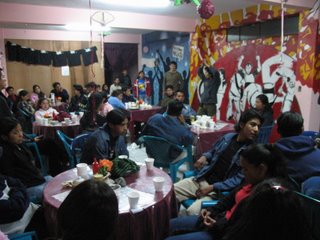
But the president of la JEM, Ever, exclaimed upon arriving, Now it’s Rockafé! and a visiting marimba player recognized the message of waking youth finding themselves in an unjust world and commented that he had never seen before in Tacaná anything with such energy.

During the meal many people got up to toast to our presence and to say good-bye. Every comment was moving and sad, but the most unexpected and unforgettable moment came when Nancy, our host sister, got up to speak. Nancy studies and lives in San Marcos, so we haven’t gotten to know her well. She’s a sweet-hearted and hard-shelled rocker with long dark hair braids who has been known to punch men who whistle at her and who tends to make fun of people when they cry.

She stared past me at the paintings and said thoughtfully, with bright red teary eyes: Wow, Brooke, I’ve been looking at these paintings and I see myself in them. I see all of la JEM in these murals. I don’t know if everyone else sees what you’ve done here, but it’s phenomenal. I know what’s it’s like to live in someone else’s house and be in someone else’s culture because I’ve done it and I know it’s hard. Thank you. I consider you both to be a part of our family, the Velásquez Pérez family, and I don’t know you as well as I want to, but I consider you my siblings. This is just the beginning of a long friendship.
Since la JEM plans to use the extra rooms in Rockafé as office space and the café area to have concerts, I know the works will be seen my many and that they are an important moment in the development of their organizational philosophies. I also know that the JEM members will continue painting these walls and others with their own images and ideals. All year it has been a struggle to understand one another, and this last project gave me the opportunity to communicate myself to them—through art—that I get them, that I love them.




